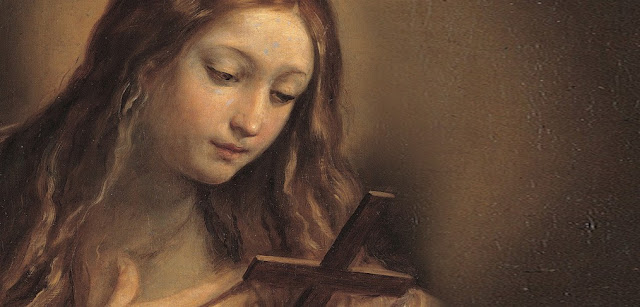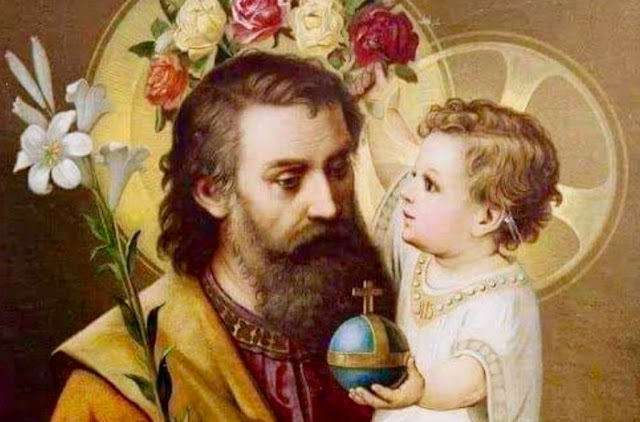The Canonization Process Explained
Whenever there will be news of a candidate for sainthood is up for approval of the cause or for beatification and canonization, some of the faithful would ask how does the process work or what does beatification or canonization means. For this blogpost, we are going to look on how the long and complex process of canonization happened.
But before we get to our topic, let us define what "Canonization" means. Canonization is the declaration of a deceased holy person as an officially recognized saint, specifically, the official act of a Christian communion declaring a person worthy of public veneration and entering his or her name in the canon, or authorized list, of the Church's recognized saints.
Keep in mind that prior to the year 1234, no formal canonization process existed. Usually martyrs and those recognized as holy were declared saints by the local church at the time of their deaths. The faithful venerated these saints and asked for their intercession; for example, St. Lucy (d. 304) went to pray at the tomb of St. Agatha, a fellow Sicilian who was martyred a century earlier.
Eventually, the church saw the need to tighten the canonization process to ensure, as best as possible, that only holy people were recognized as saints. For instance, long ago, a local church in Sweden canonized an imbibing monk who was killed in a drunken brawl — hardly evidence of martyrdom. Therefore, in the year 1234, Pope Gregory IX established procedures to investigate the life of a candidate saint. In 1588, Pope Sixtus V entrusted the Congregation of Rites (now the Congregation for the Causes of the Saints) to oversee the entire process. Various popes, and most recently Pope Benedict XVI in 2006, have revised and improved the norms and procedures for canonization.
 |
| Servant of God Lucia dos Santos of Fatima |
Today the process is: When a person dies who has "fame of sanctity" or "fame of martyrdom," the bishop of the diocese initiates an investigation. This process can only begin five years after the death of the person. The pope may waive this requirement, as in the cases of Pope St. John Paul II, St. Mother Teresa of Calcutta and Servant of God Lucia dos Santos of Fatima. The bishop then petitions the Holy See for permission to initiate a Cause for Beatification and Canonization. If granted, the candidate is declared a “Servant of God.”
The diocesan tribunal now undertakes an informative gathering process. The candidate's writings are examined closely to ensure they possess "purity of doctrine," i.e. nothing heretical or contrary to the faith. Those who knew the candidate also would be interviewed. After a thorough examination, which may take years, the Tribunal renders a judgment. The bishop makes the final judgment as to whether or not the Servant of God demonstrated heroic virtue.
 |
| Venerable Matt Talbot |
If the bishop made a favorable decision on the cause of the Servant of God, all of the information is gathered, bound and sealed. This information, called the Acta (Acts), is submitted to the Congregation for the Causes of the Saints and entrusted to a relator, who is appointed to oversee the process.
A theological commission examines carefully the Acta, and prepares a Positio, a summary of the life and virtues of the candidate.
The theological commission then renders a judgment, and passes a recommendation to the members of the Congregation. The Congregation then decides whether or not to recommend to the Holy Father a Decree of Heroic Virtue. If it does and if the Holy Father agrees, then the candidate is declared "Venerable."
 |
| Blessed Anna Katherine Emmerich |
The next step is beatification. A martyr, who died for the faith and truly offered his life in a sacrifice of love for Christ and the church, may be beatified and declared blessed by virtue of martyrdom itself. For example, Archbishop Oscar Romero (now a canonized saint) was declared a martyr because he was assassinated while offering Mass by those “who hated the faith.”
Otherwise, the candidate must be credited with a miracle. To verify a miracle, both a scientific commission and a theological commission investigate the miracle. While the scientific commission must determine that the miracle has no scientific explanation, the theological commission must determine whether God performed the miracle through the intercession of the candidate.
Once the pope approves the miracle, the Servant of God would be beatified, and called “Blessed.” With the recent norms, the Prefect of the Congregation usually conducts the beatification ceremony, because it is not considered an infallible act. The Blessed may now be venerated publicly, but with restriction to a city, diocese, region or religious community. Accordingly, the pope would authorize a special prayer, Mass or proper Divine Office honoring the blessed.
 |
| St. Therese of the Child Jesus Doctor of the Church |
After beatification, another miracle is needed for the formal declaration of sainthood. Once the pope approves the miracle, the Blessed would be canonized andThe saint may now be venerated throughout the universal church. Also, the saint’s feast day may be added to the universal liturgical calendar, or simply to the local calendar. For example, St. Anthony of Padua’s feast day is celebrated June 13 on the universal calendar, whereas St. Kateri Tekakwitha’s feast day July 14 is celebrated only in America.
In the Rite of Canonization, the pope infallibly declares that the person is with God and worthy of imitation as a faithful disciple of Christ. The pope does not “make” a person a saint, but recognizes him or her as a saint.
There is another kind of canonization called equipollent canonization. An equipollent canonization happens when Popes have several times permitted to the universal Church, without executing the ordinary judicial process of canonization described above, the veneration as a saint, the "cultus" of one long venerated as such locally. This act of a pope is denominated "equipollent" or "equivalent canonization" and "confirmation of cultus". According to the rules Pope Benedict XIV instituted, there are three conditions for an equipollent canonization: (1) existence of an ancient cultus of the person, (2) a general and constant attestation to the virtues or martyrdom of the person by credible historians, and (3) uninterrupted fame of the person as a worker of miracles.
The Clincher - Endowing a Saint the title "Doctor of the Church"
For some saints, there were cases that they will be declared as "Doctors of the Church" where the Church recognized the saints having made a significant contribution to theology or doctrine through their research, study, or writing. The requisite conditions are enumerated as three: eminent learning, a high degree of sanctity, and proclamation by the Church. Pope Emeritus Benedict XIV explains the third as a declaration by the supreme pontiff or by a general council.
The procedure involved extending to the universal Church the use of the Divine Office and Mass of the saint in which the title of doctor is applied to him. The decree is issued by the Congregation for the Causes of the Saints and approved by the pope, after a careful examination of the saint's writings thus conferring a saint the title of "Doctor of the Church".
As of this writing, there were 36 saints that were conferred the title "Doctor of the Church". Until 1970, no woman had been named a doctor in the church, but since then four additions to the list have been women: Saints Teresa of Ávila (St. Teresa of Jesus) and Catherine of Siena by Pope St. Paul VI; St. Therese of the Child Jesus and of the Holy Face), Pope St. John Paul II; and St. Hildegard of Bingen by Pope Emeritus Benedict XVI.
Now we see how the whole process works, keep in mind that the Pope does not “make” a person a saint, but recognizes him or her as a saint. All Saints are united to the Church as powerful intercessors, and we ask, therefore, for their prayers and those of the whole communion of saints.
References:
Rice, Fr. Larry "Doctors of the Church?", United States Conference of Catholic Bishops, 2015.
Saunders, William, "The canonization process", Retrieved from https://www.catholicherald.com/faith/your_faith/straight_answers/the_canonization_process/ on July 5, 2020.




Comments
Post a Comment